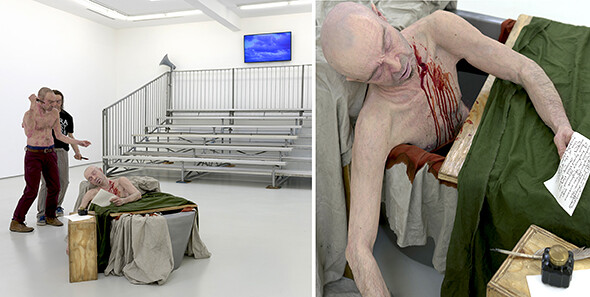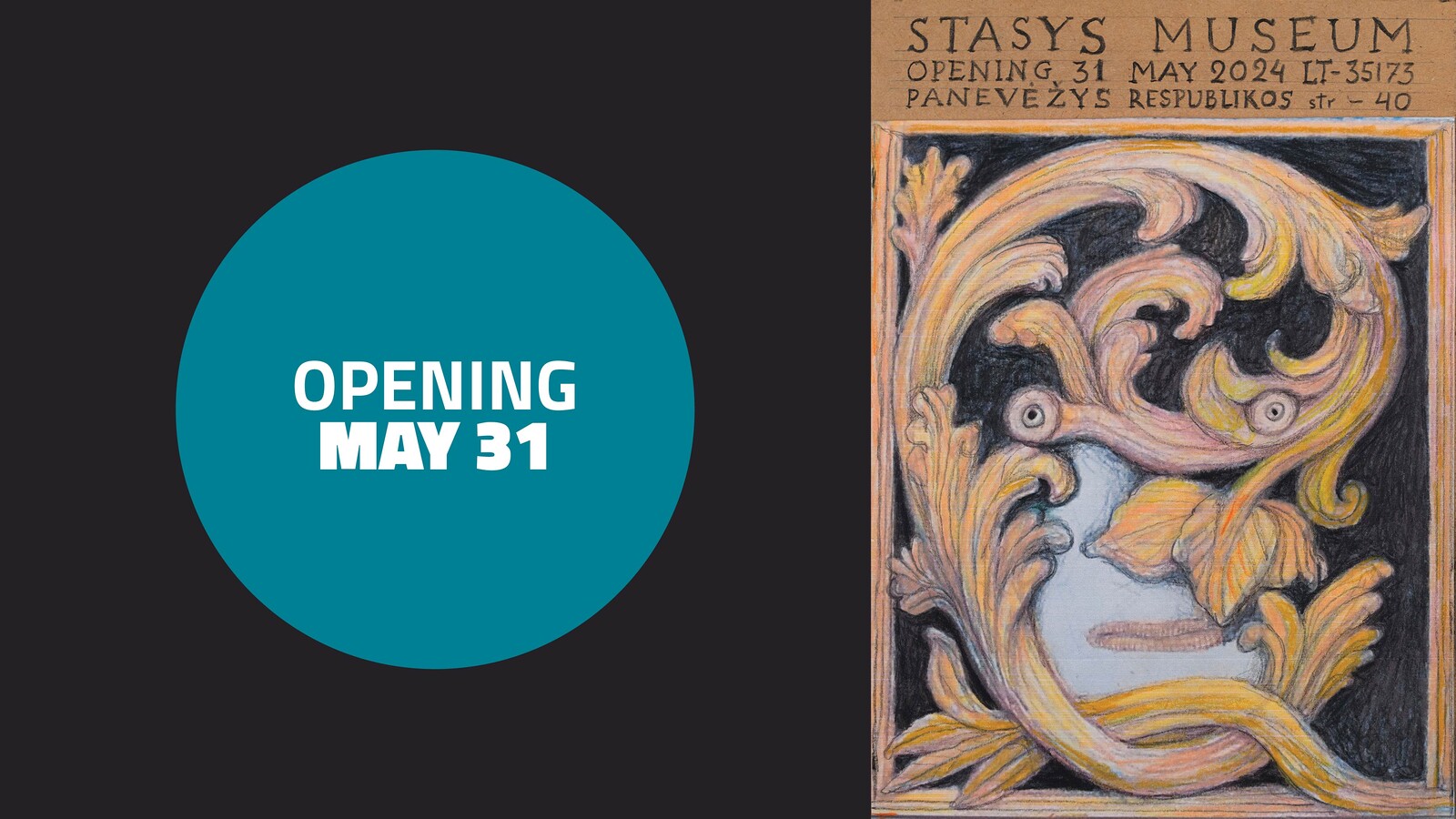April 9–May 21, 2016
Roberts & Tilton
5801 Washington Boulevard
Culver City, California 90232
Hours: Tuesday–Saturday 11am–6pm
T 323 549 0223
info [at] robertsandtilton.com
Roberts & Tilton is pleased to present a new installation by Daniel Joseph Martinez. IF YOU DRINK HEMLOCK, I SHALL DRINK IT WITH YOU or A BEAUTIFUL DEATH; player to player, pimp to pimp. (As performed by the inmates of the Asylum of Charenton under the direction of the Marquis de Sade) is an immersive environment referencing Jacques-Louis David’s seminal portrait The Death of Marat (1793). Whereas David’s painting represents a single moment, Martinez’s interpretation is conceived as a mise en scène, constantly oscillating between past and present.
Entering the gallery, the viewer is confronted by a pair of aluminum bleachers dividing the gallery space. Monitors depicting slow moving clouds are hung over each set, suggesting windows. In the space carved out between the bleachers are three life-like sculptures of Martinez as Marat, his assassin Charlotte Corday, and of the artist himself. A closer look reveals that while the figures are modeled after the artist’s own body, each appropriate the signifiers specific to their character: a knife; fresh wounds; a bathtub; a chore jacket. Confronting this hyper-awareness of the physical body is the fourth character, who appears in the deadpan recital of Corday’s monologues from Peter Weiss’s play Marat/Sade (1963) projected throughout the installation.
While realized as a history painting, The Death of Marat is simultaneously an idealized and accurate portrait. It depicts an isolated scene inhabited solely by Marat, with no description of the assassination nor inclusion of other characters; David’s solution to Corday is in effacement. Here, Martinez’s staging of Marat’s death is that of eroticized triple murder sexual event seen through the lens of one character playing multiple roles suspended in the same space. This experimentation with one’s own personality through the identity of the other is not unlike the Situationist slippage present in contemporary iterations of the avatar: the purposeful projection of identity or identities from one origin source. In Martinez’s representation of the painting, marked by the deliberate lack of painting, he collides and blurs boundaries between the actual and the perceived, and raises questions about reality and representation.
In casting familiar characters in unfamiliar guises, Martinez constructs space in a way that is at once real and completely fabricated. From any individual vantage point, viewers can experience the suggestion of unfolding multiple all-encompassing environments. The bleachers implicate the viewer as spectator to a play-within-a-play, or a convention; politics has long been both theatre and business. Subverting the existing architecture of the gallery through the construction of an alternative space forces a schism between interior and exterior spheres, a technique which Martinez has often employed in his practice.
The use of Marat has historically been made to make a political commentary of the present. Marat, as exerted by David’s brush, had a direct political role: subverting and undermining prevailing ideas of both pro- and anti- Revolutionary factions. Weiss interpreted the death of Marat through Marquis de Sade’s theatre of brutality to comment on the Vietnam War, specifically the emergence of an economy of inequality and corruption. Finally, Martinez explicates a contemporary connection between the events of the French Revolution laying the foundation for American Exceptionalism, the intersections of and by Marat’s body, and the socio-political ideas underlying Weiss’s play through the artist’s own process of détournment.
Martinez’s situation-creating deftly engages with the realities ensconced in these complexly malleable relationships of fabricated power. Robespierre, mastermind of the Reign of Terror, believed himself as a democratizing force—as did Marat, the fallen revolutionary whose martyrdom was further bolstered by Sade’s eulogizing. Regardless of their contradictions, all built robust followings. The convergence of these figures on one stage is not simply a form of visual theater, but emerges as a prism from which to examine the nature of revolutions, power, and abuses underlying contemporary democratic principles.
For more than 30 years, Los Angeles-born artist Daniel Joseph Martinez (b. 1957) has been honing his politically-inflected practice, which critic Jeffrey Kastner has characterized as “unapologetically prob[ing] uncomfortable issues of personal and collective identity, seeking out threadbare spots in the fabric of conventional wisdom.” Martinez’s practice takes the form of photography, painting, site-specific installation, printed works, performance and public interventions to question issues of personal and collective identity, vision and visuality, and the fissures formed between the appearance and the perception of difference.
For additional information, please contact Mary Skarbek, Director, T 323 549 0223.



